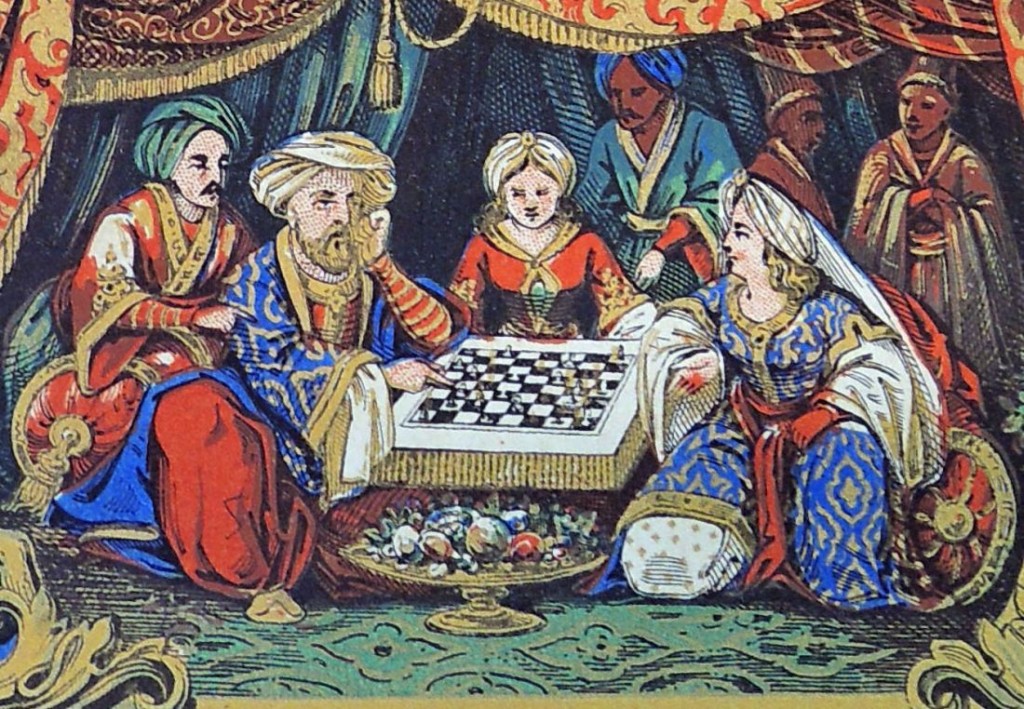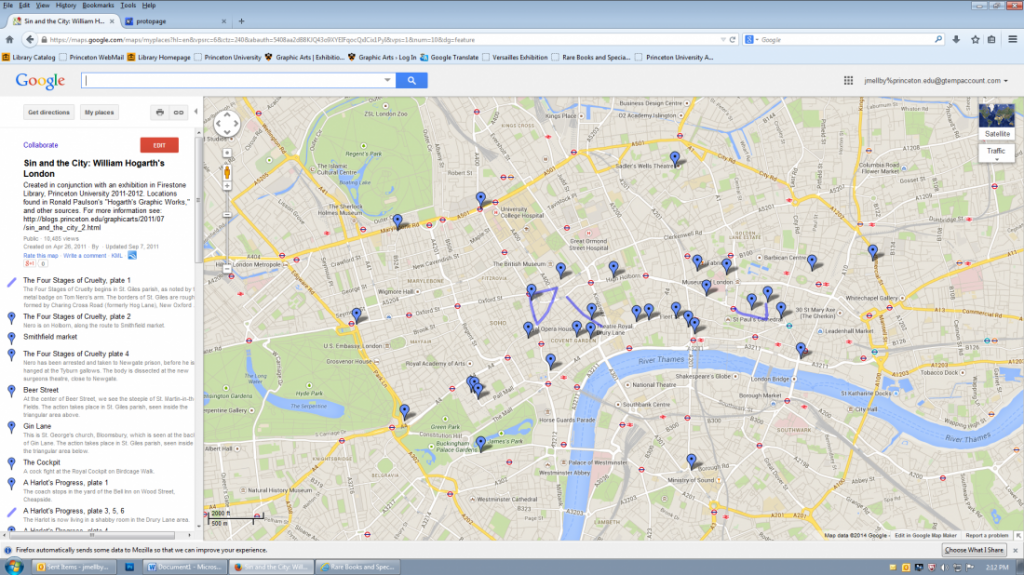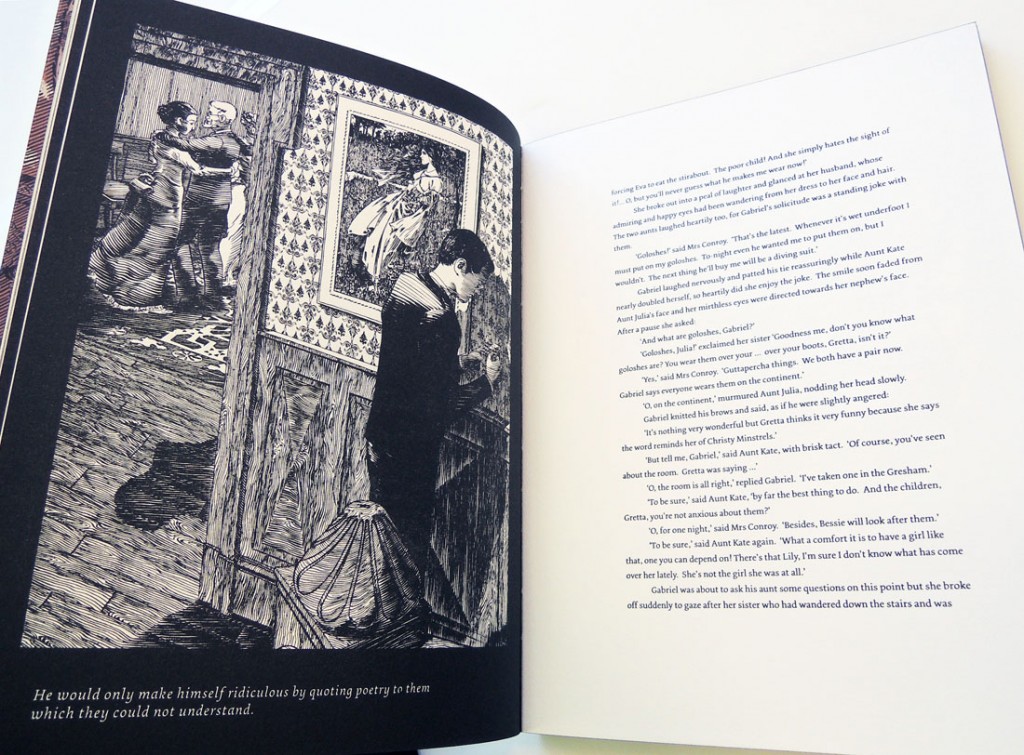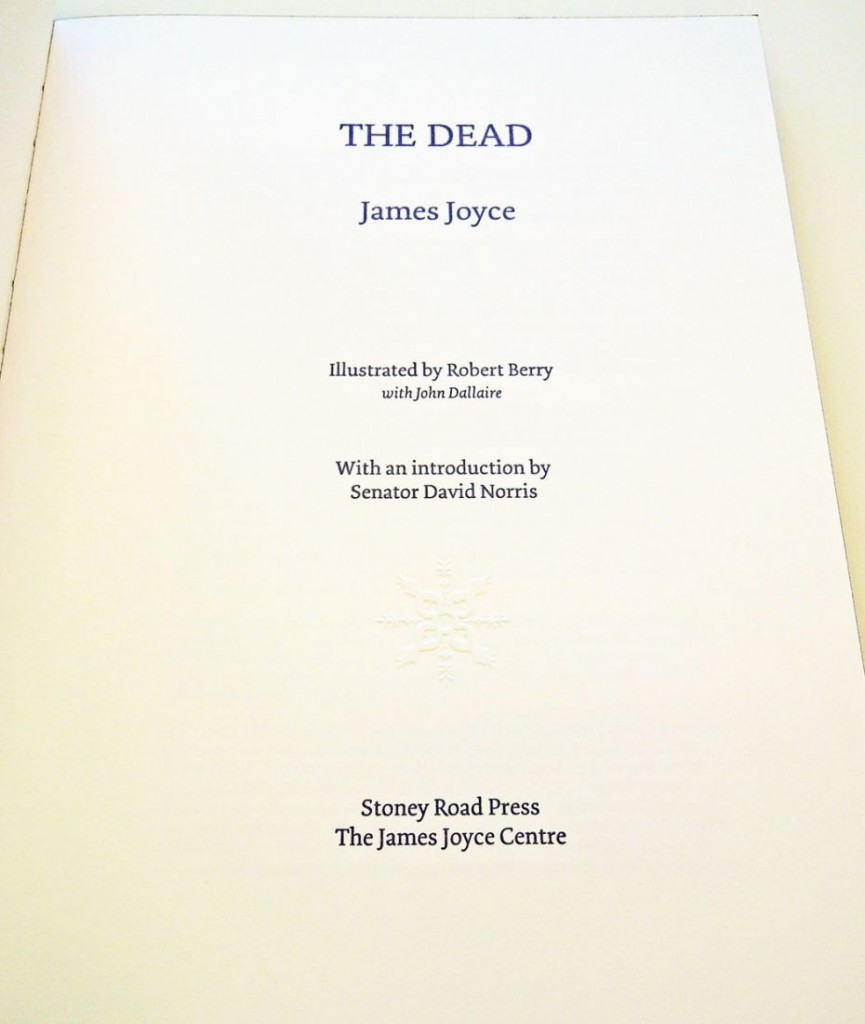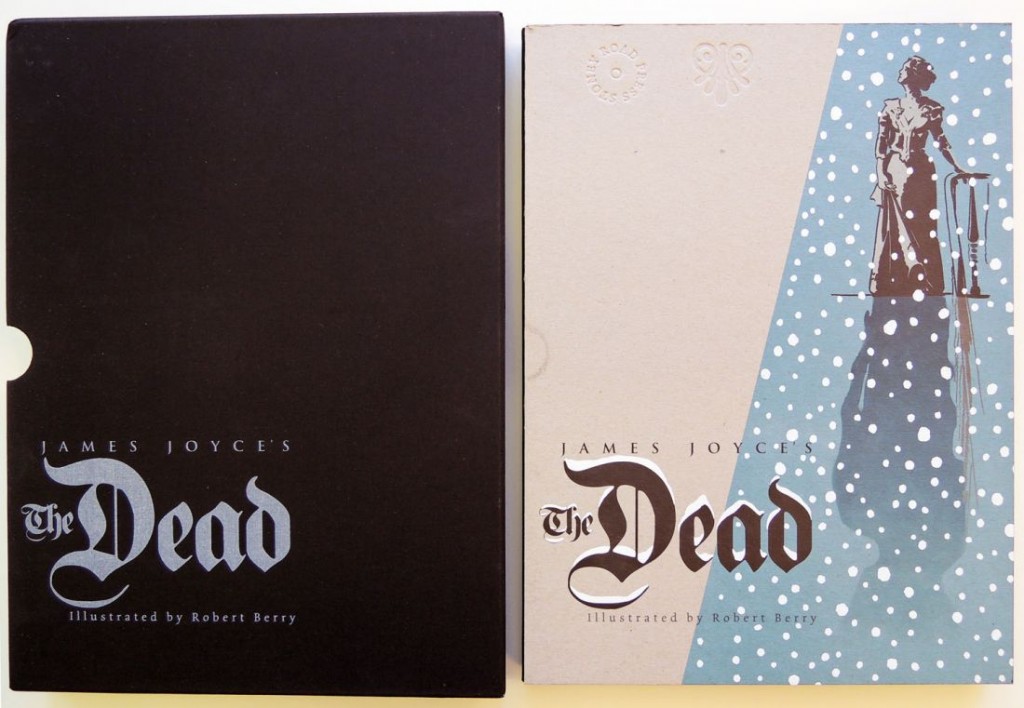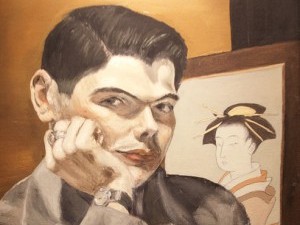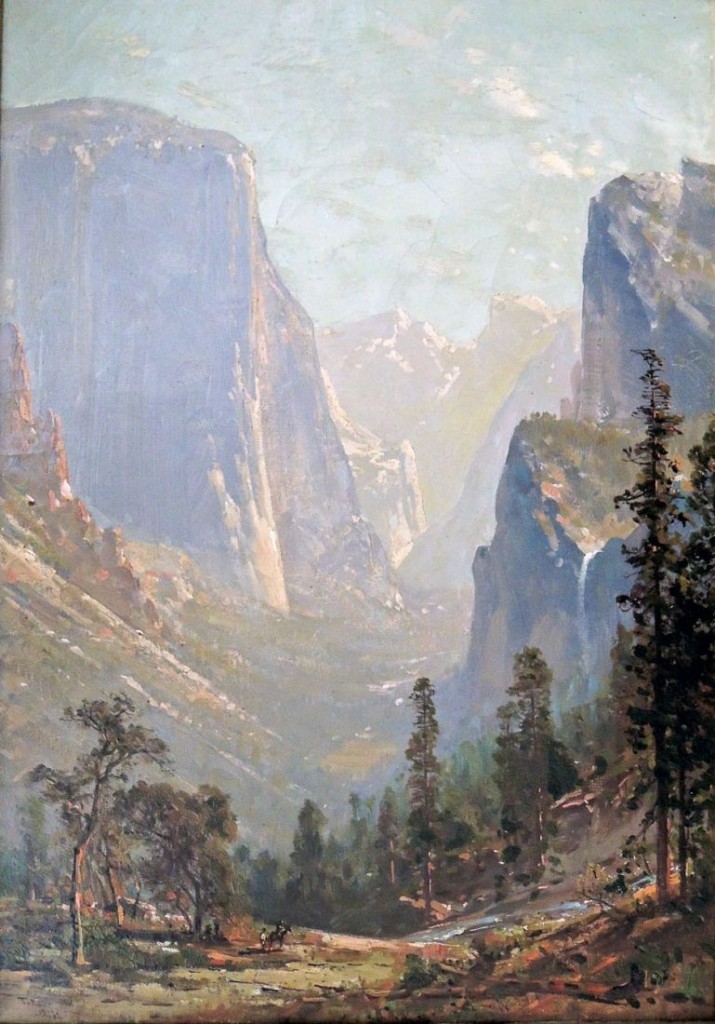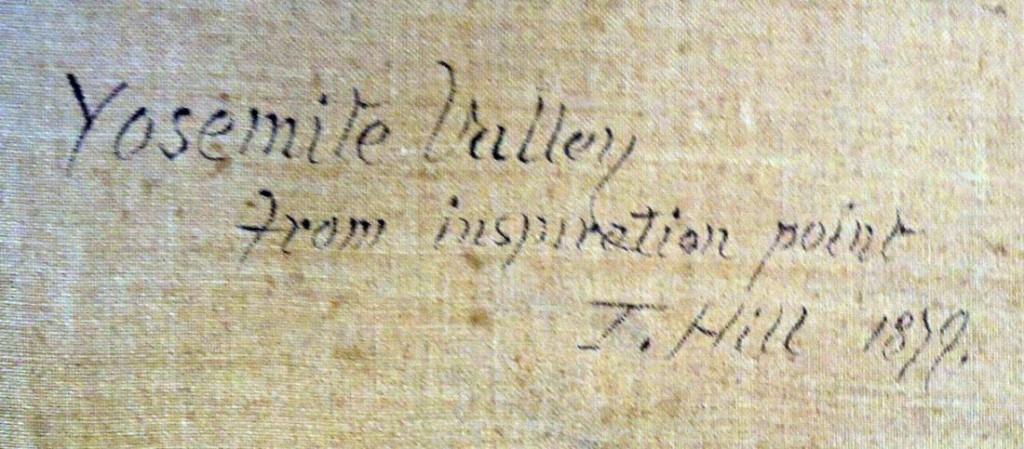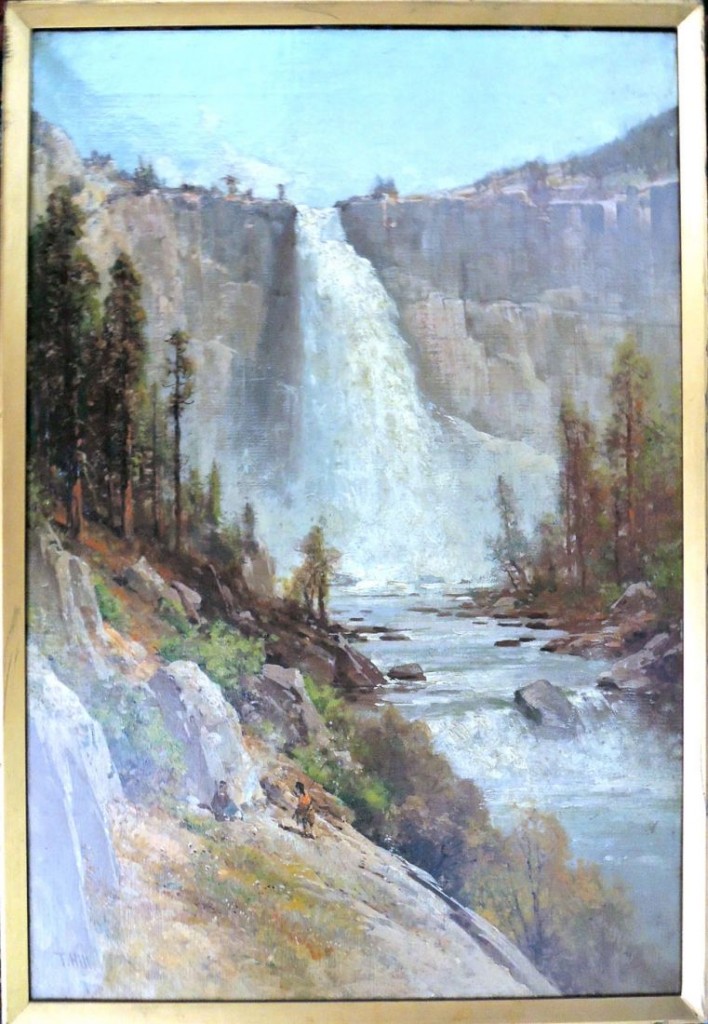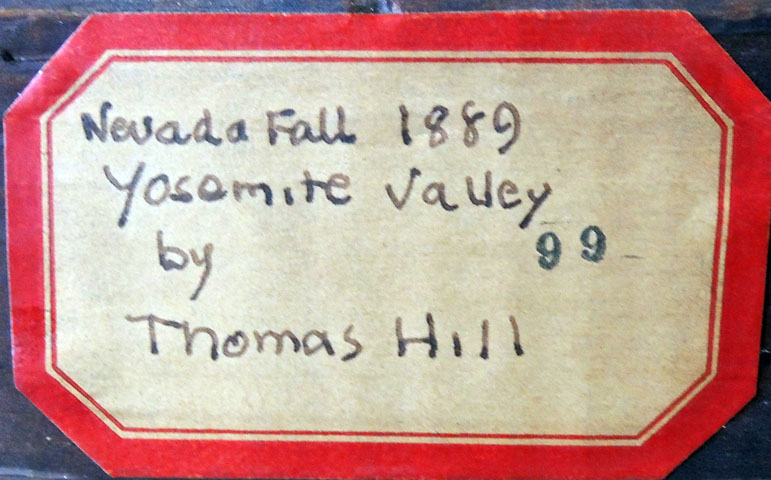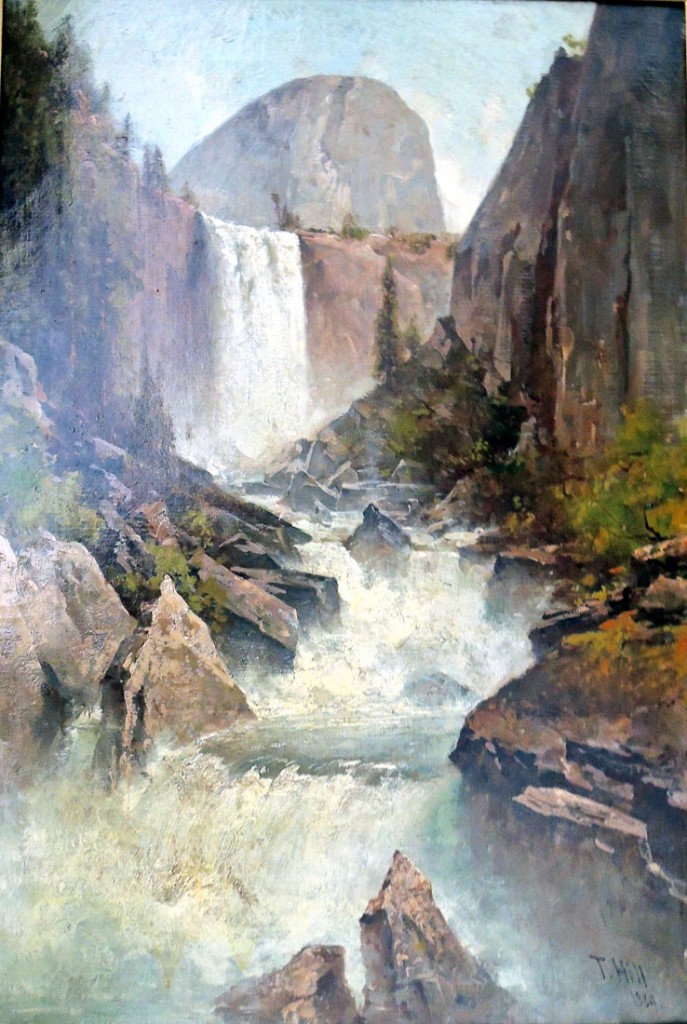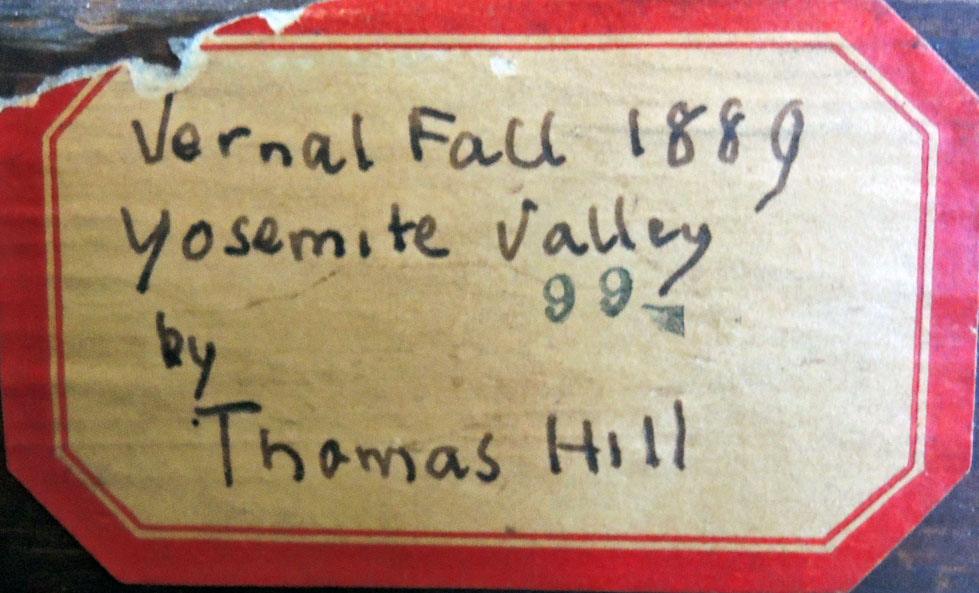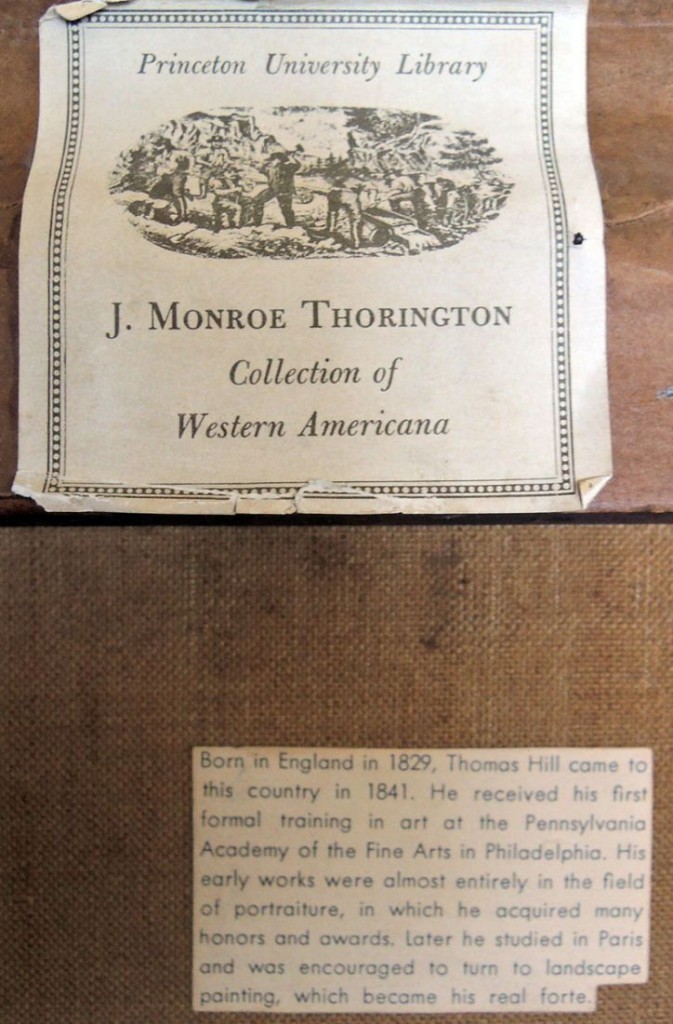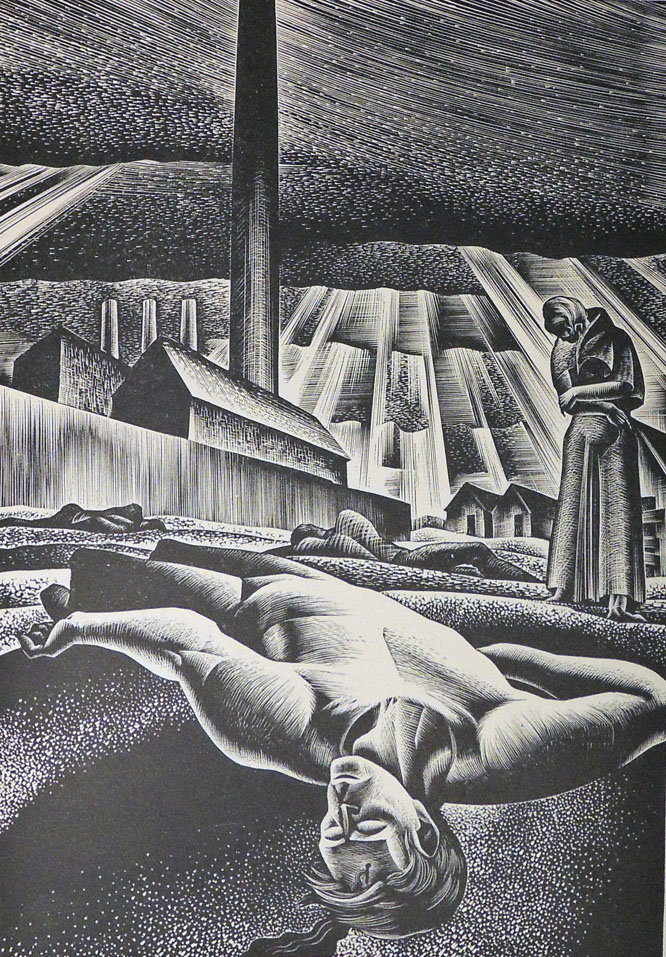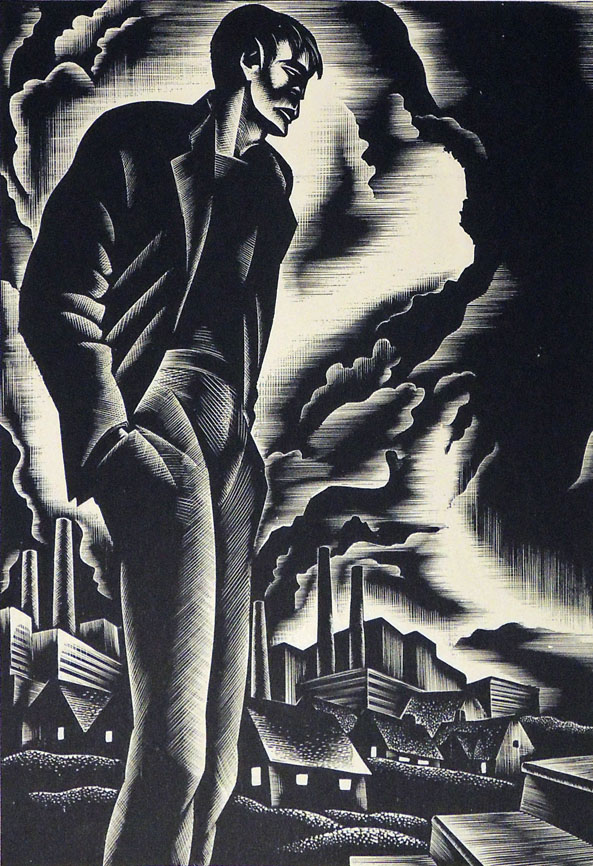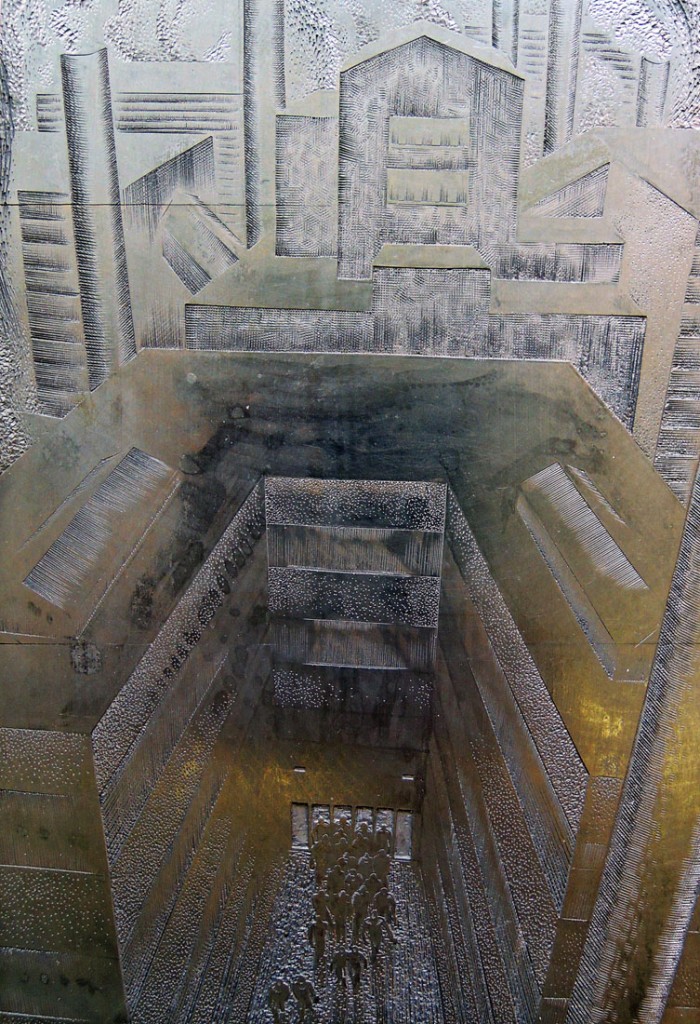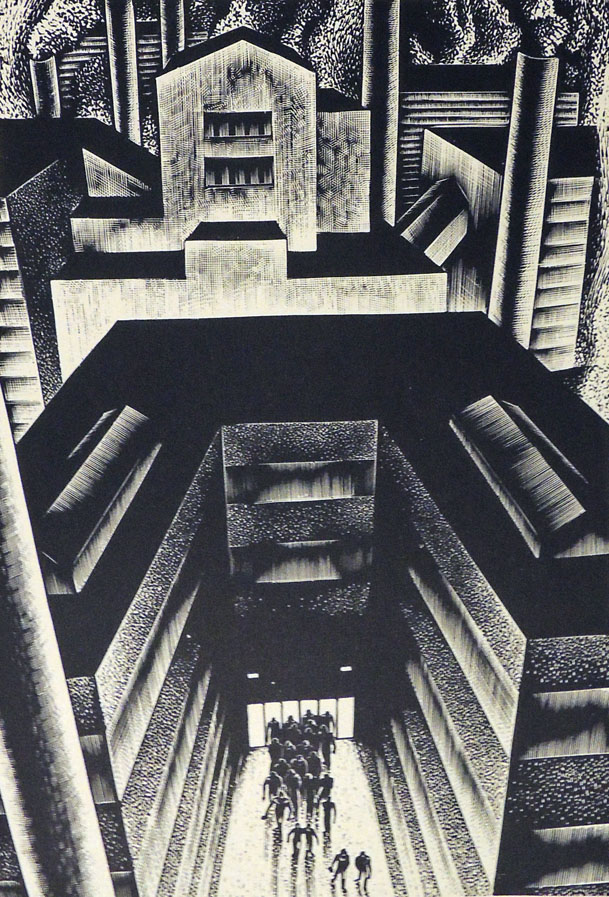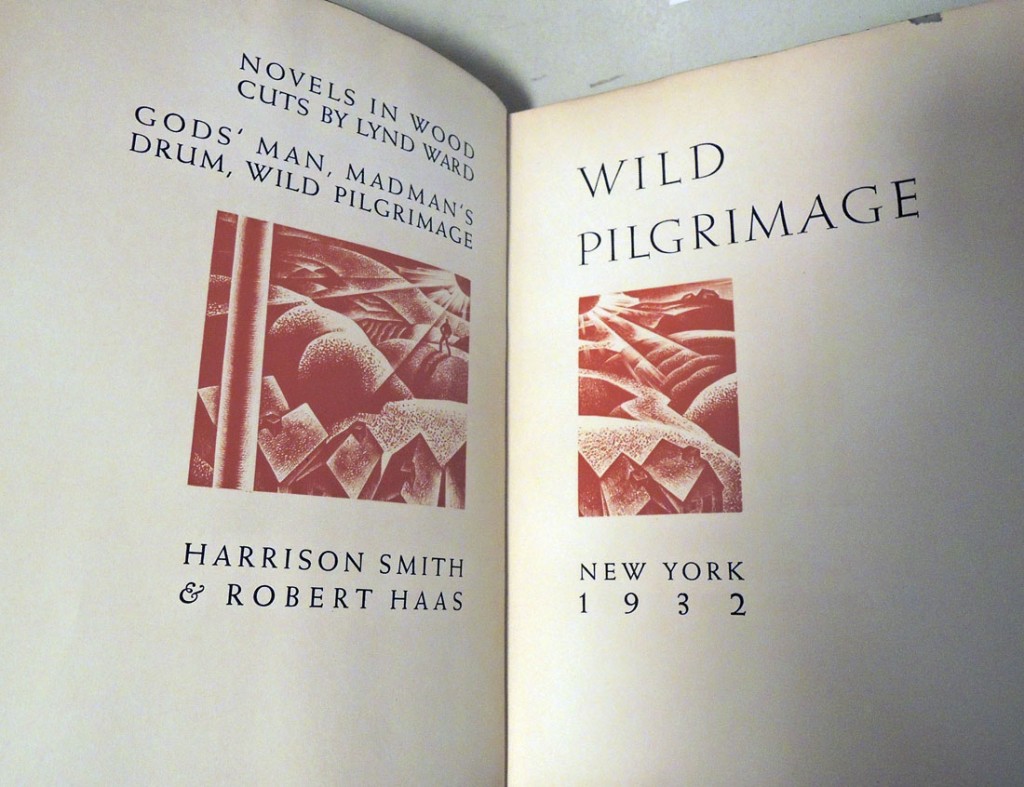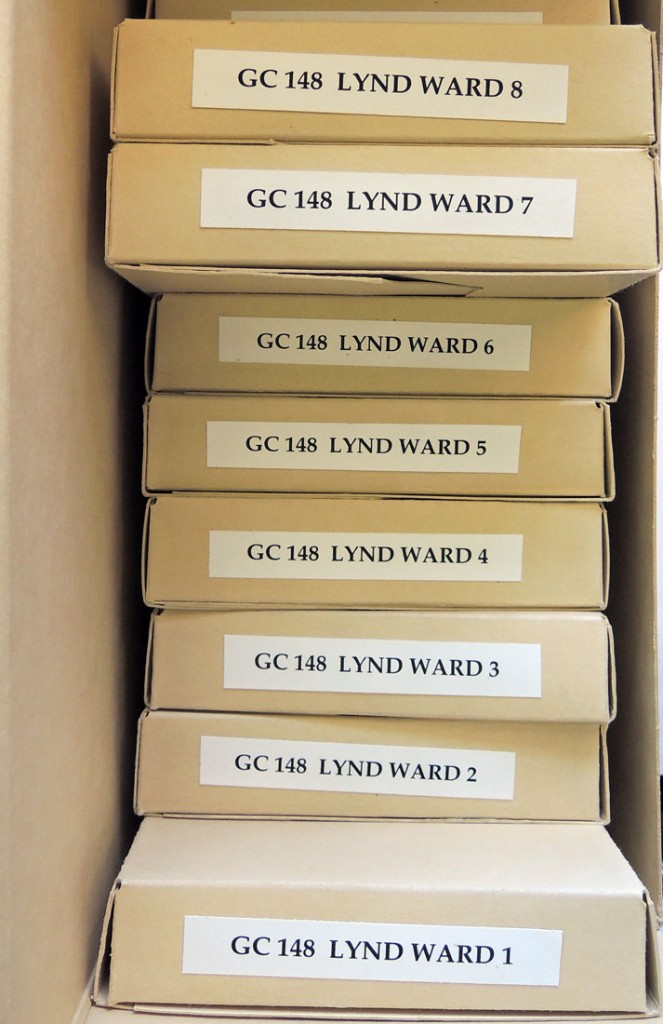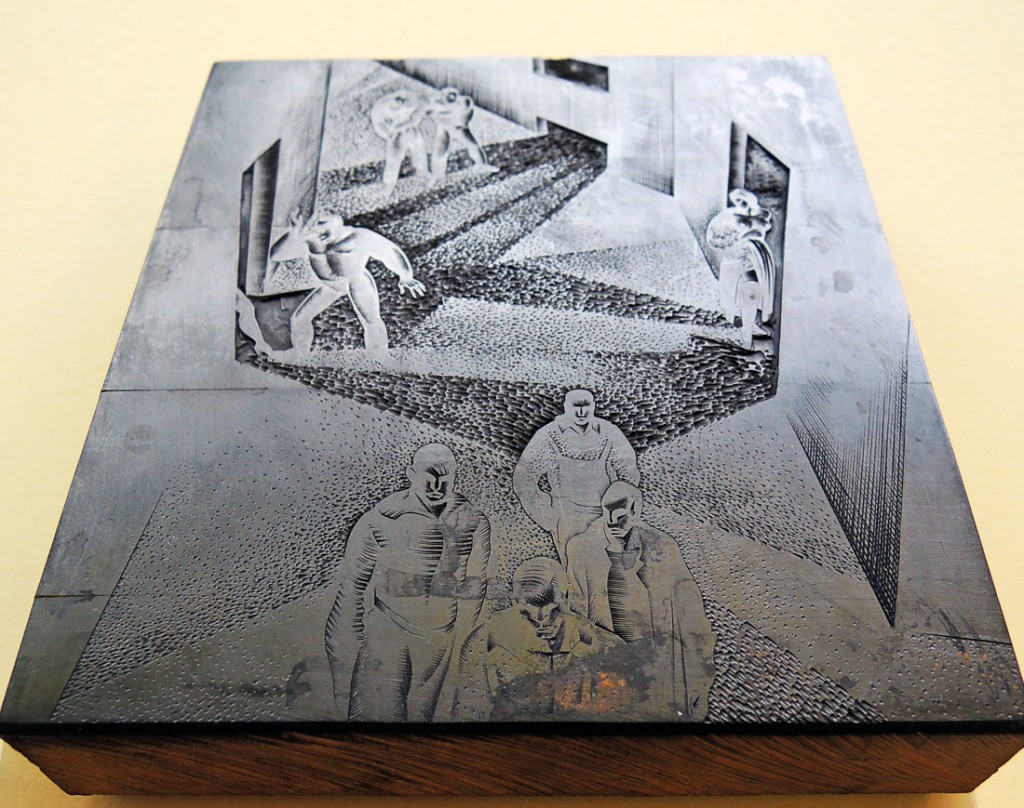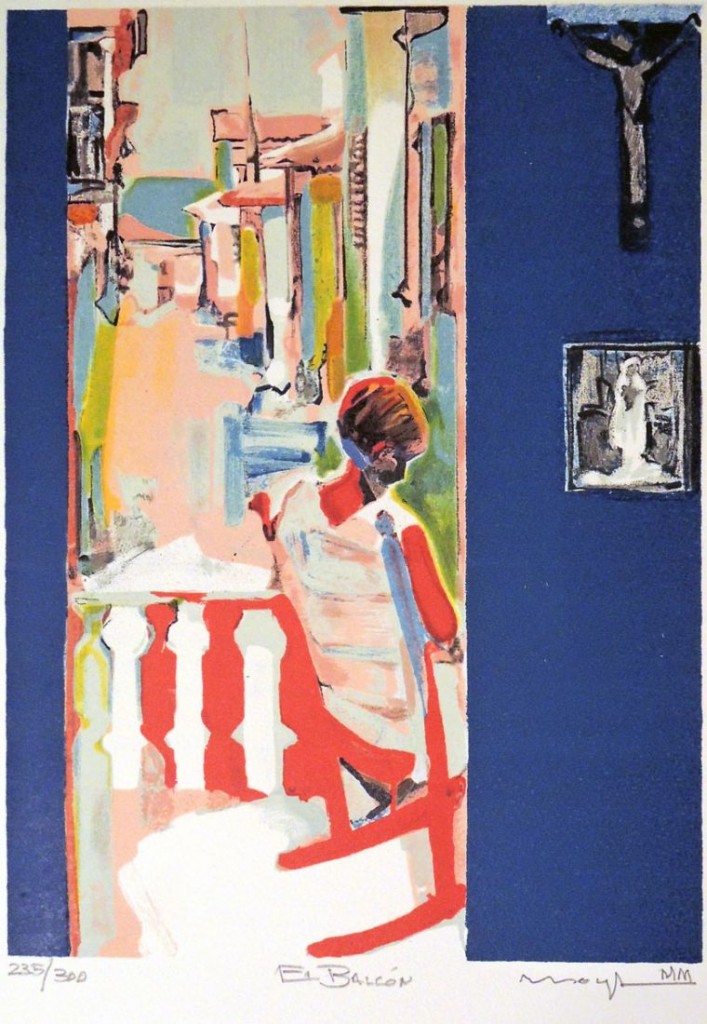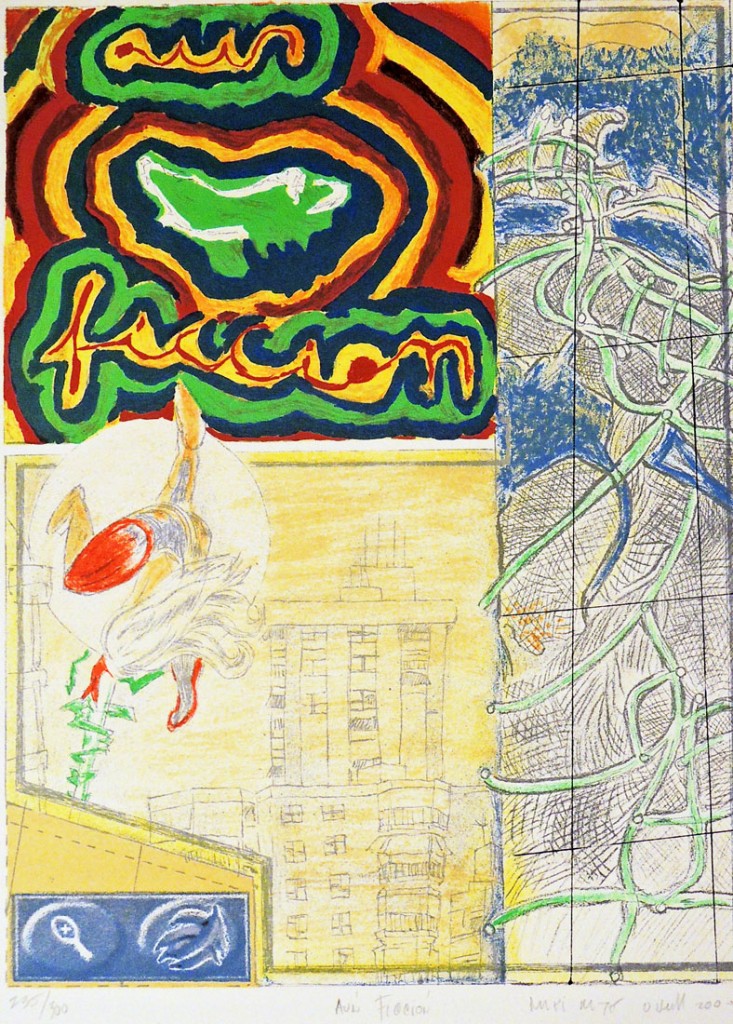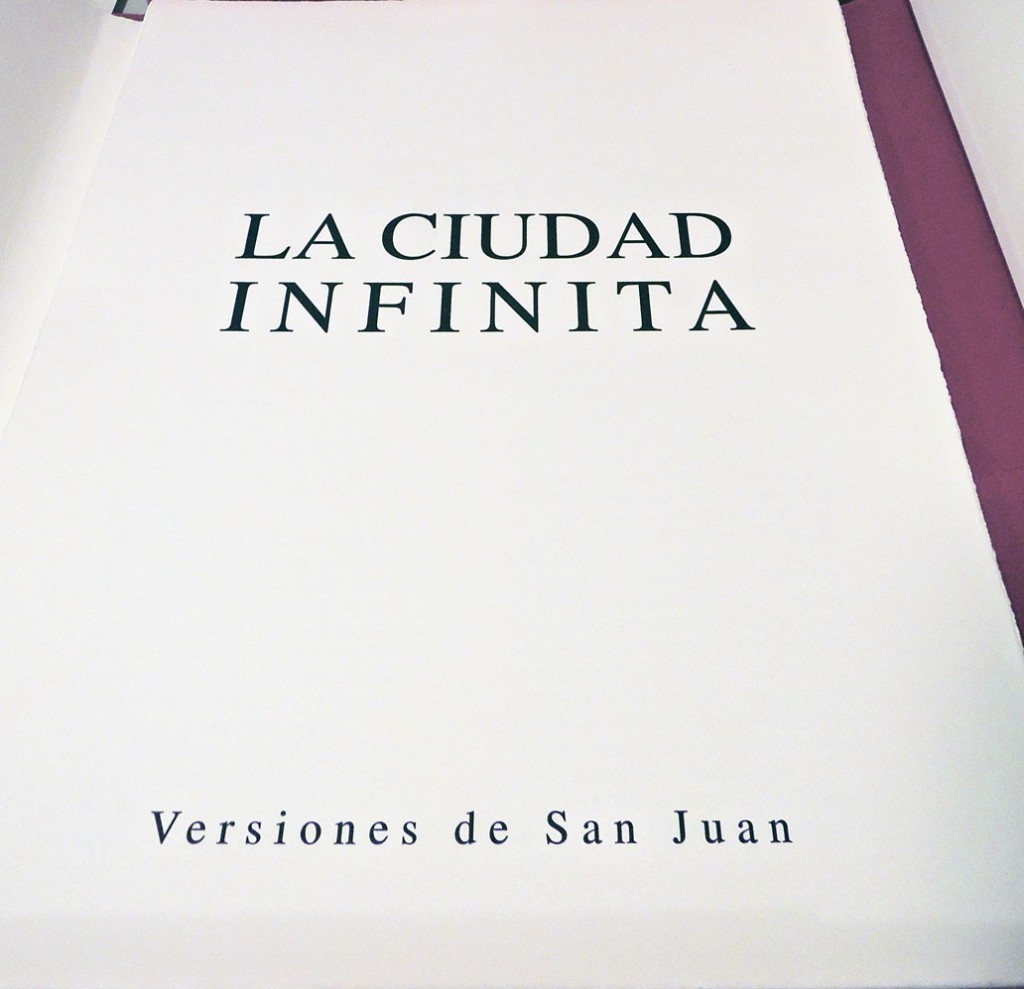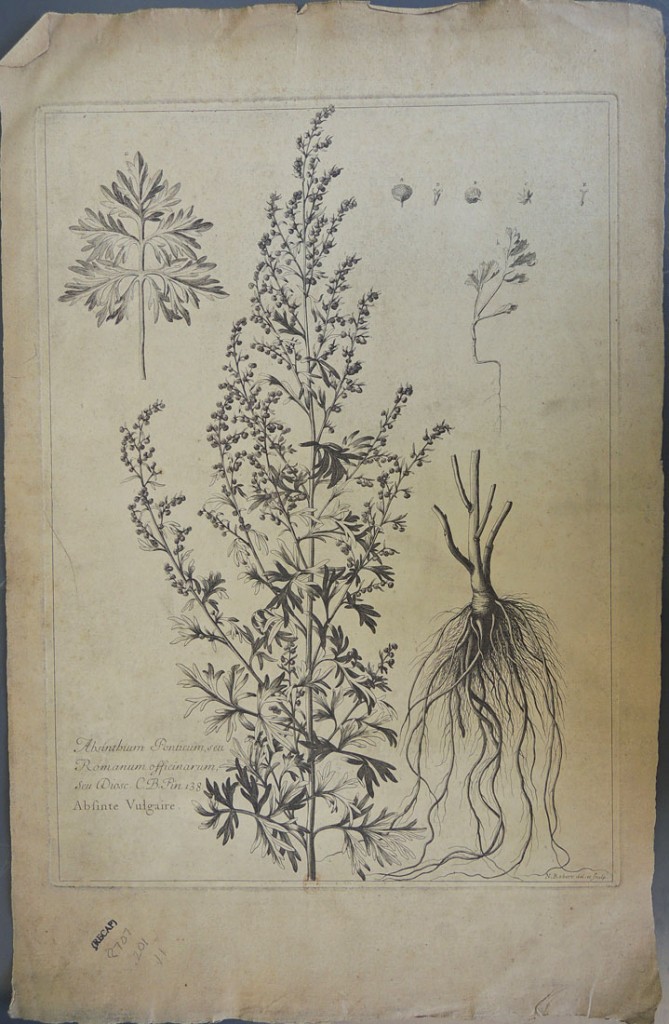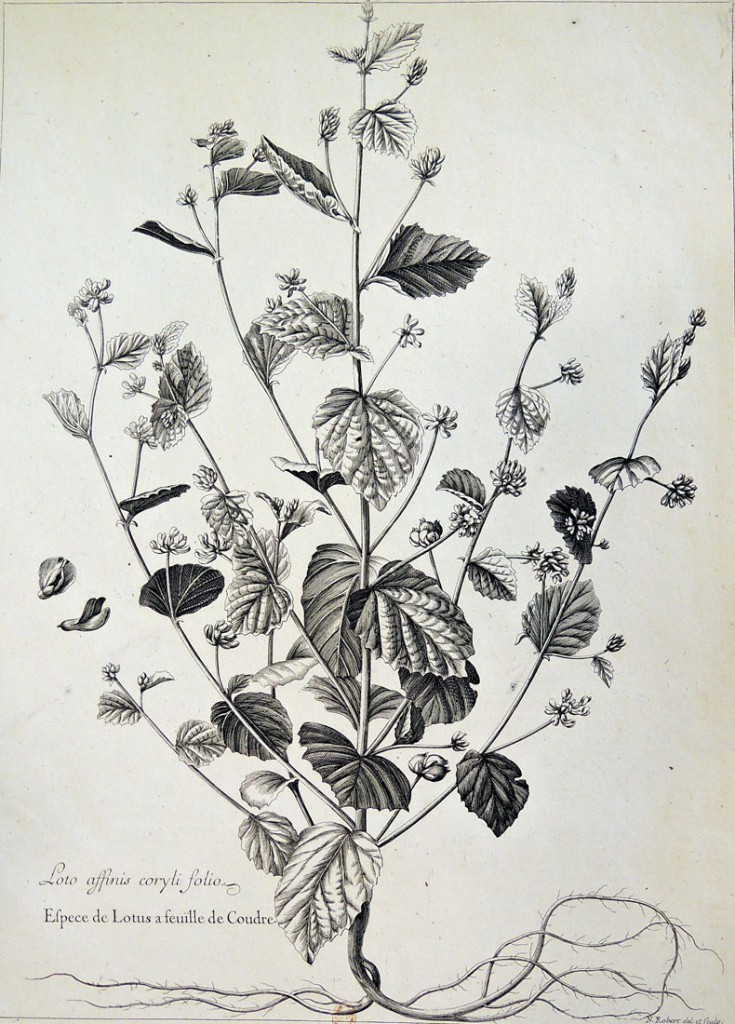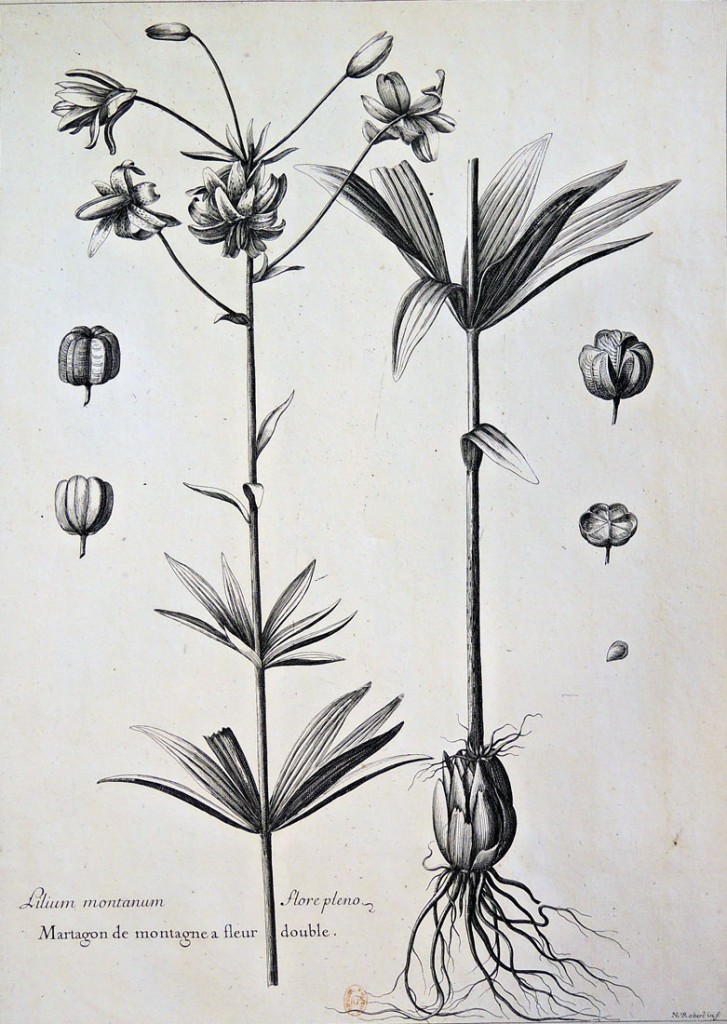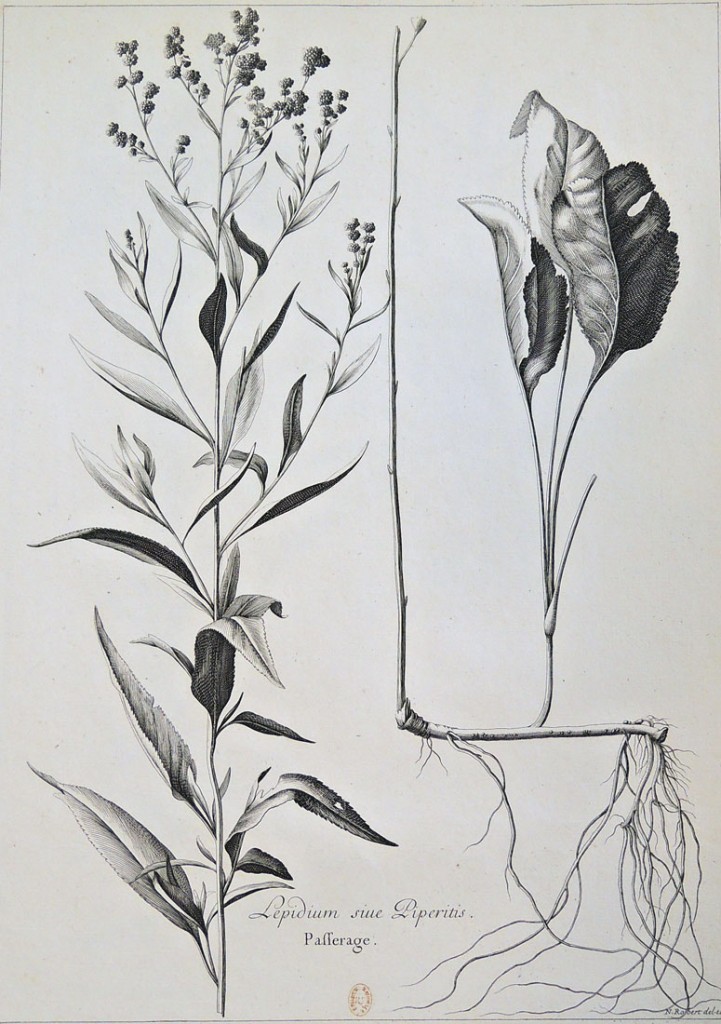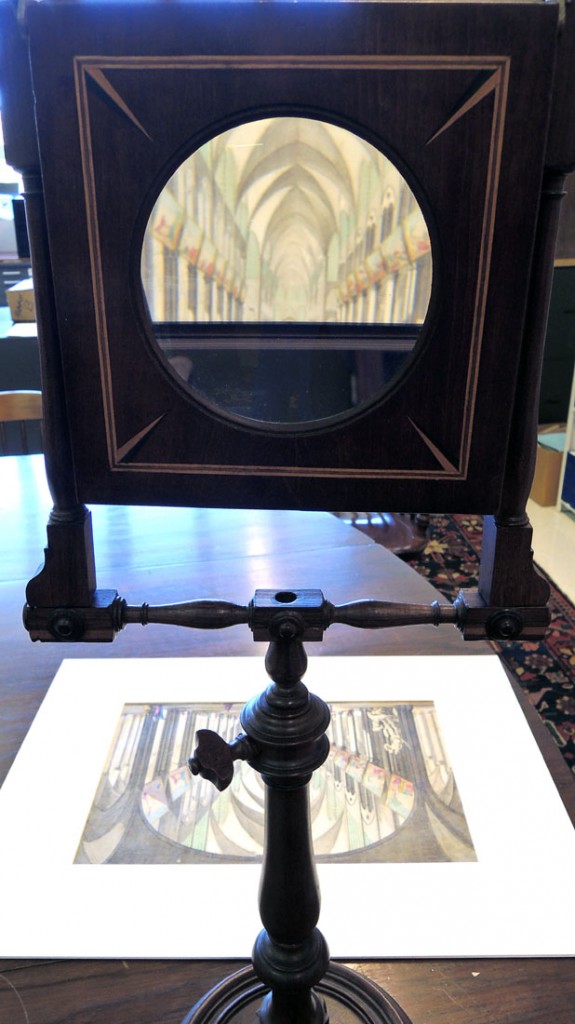
The Graphic Arts Collection is delighted to have received the donation of a vintage zograscope and 56 eighteenth-century hand-colored perspective prints (vue d’optique) from Evelyn and Peter Kraus in honour of Charles Ryskamp.
The device, also called a diagonal mirror, is simply a double convex lens and a mirror on a stand tall enough to use either sitting or standing. A well-known eighteenth-century print [below] by J.F. Cazenzave after Louis Léopold Boilly, shows a woman and her son (identified as Louise Sébastienne Danton and Antoine Danton) looking at prints through a zograscope,
Erin Blake traced the earliest mention of perspective prints to the April 2-4, 1747 St. James’s Evening Post, and after this, in a number of newspaper advertisements. By 1753, Robert Sayer published a catalogue of over 200 views and in later years, Georg Balthasar Probst established an busy studio producing prints labeled in four languages for sale throughout Europe. The majority of prints in our new collection date from the earliest years, some even proofs before the caption was added.
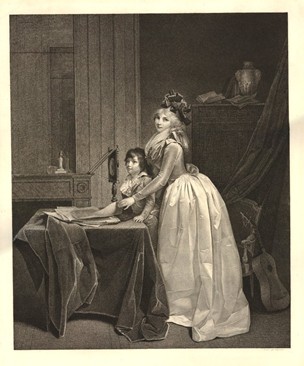
L’Optique, ca. 1794. British Museum.
It is the condition of the prints donated by Mr. and Mrs. Kraus that is particularly impressive. Because perspective prints were made to be handled and enjoyed by the whole family, most of the ones that survive are worn and/or faded. The color of these prints is strong and bright, with lovely watercolored skies and oceans.
Views of all the major cities of Europe are represented, as well as Mexico, Egypt, and the Far East. I have included a few examples below. For the complete list, here is a pdf
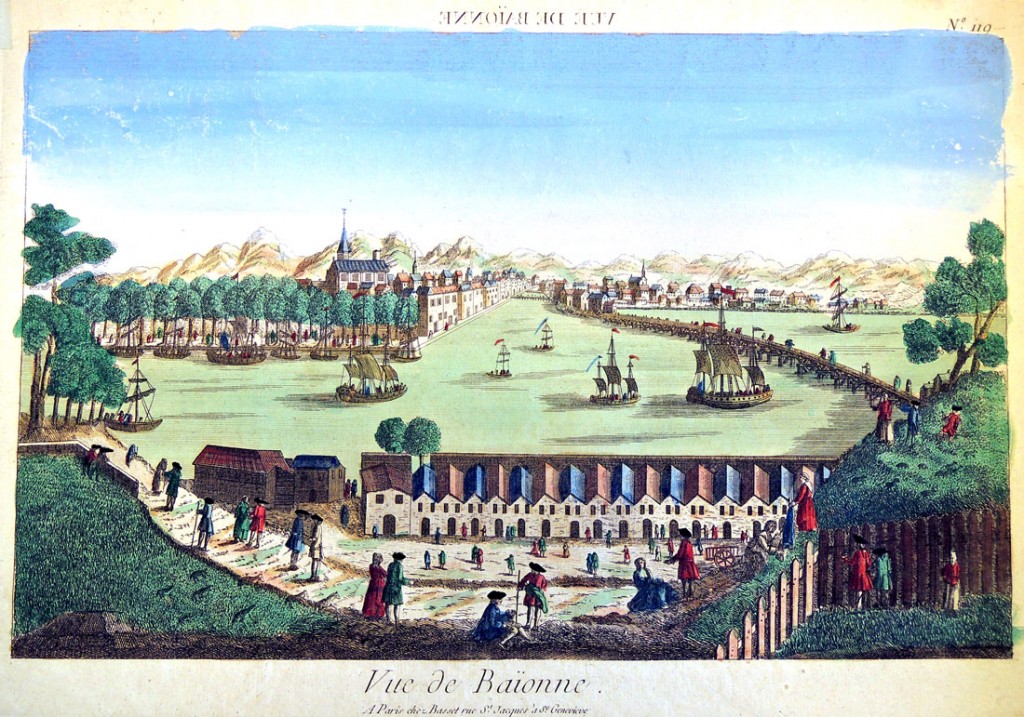 French School. Vue de Baionne. Paris, Basset, ca. 1750-1800. Original engraving hand-colored at publication.
French School. Vue de Baionne. Paris, Basset, ca. 1750-1800. Original engraving hand-colored at publication.
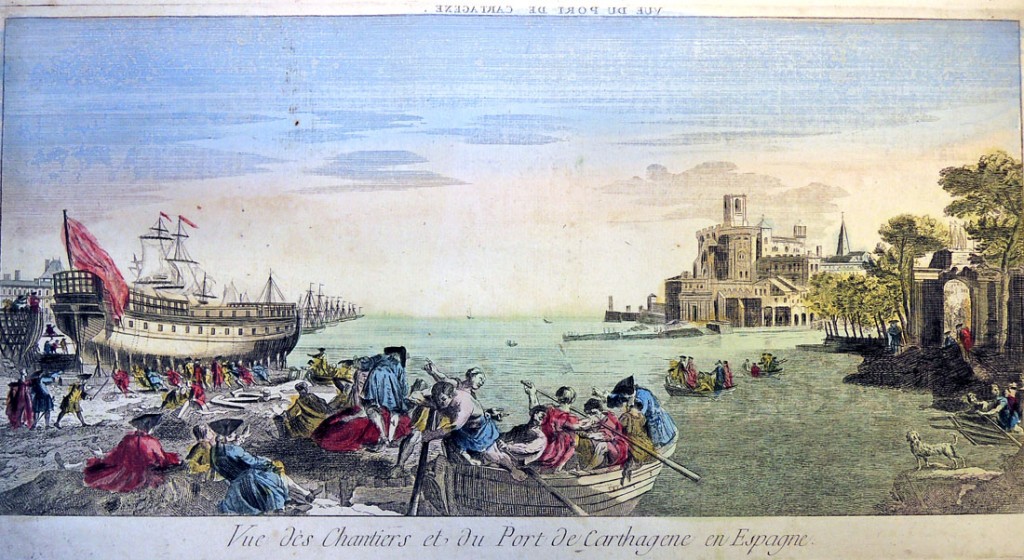 European School. Vues des Chantiers et du Port de Carthagene en Espagne. ca. 1750-1800. Original engraving hand-colored at publication.
European School. Vues des Chantiers et du Port de Carthagene en Espagne. ca. 1750-1800. Original engraving hand-colored at publication.
 Georg Balthasar Probst. Le Rouine del grande Tempio du Palmira, della parte d’Occidente. Augsburg, ca. 1750-1800. Original engraving hand-colored at publication.
Georg Balthasar Probst. Le Rouine del grande Tempio du Palmira, della parte d’Occidente. Augsburg, ca. 1750-1800. Original engraving hand-colored at publication.
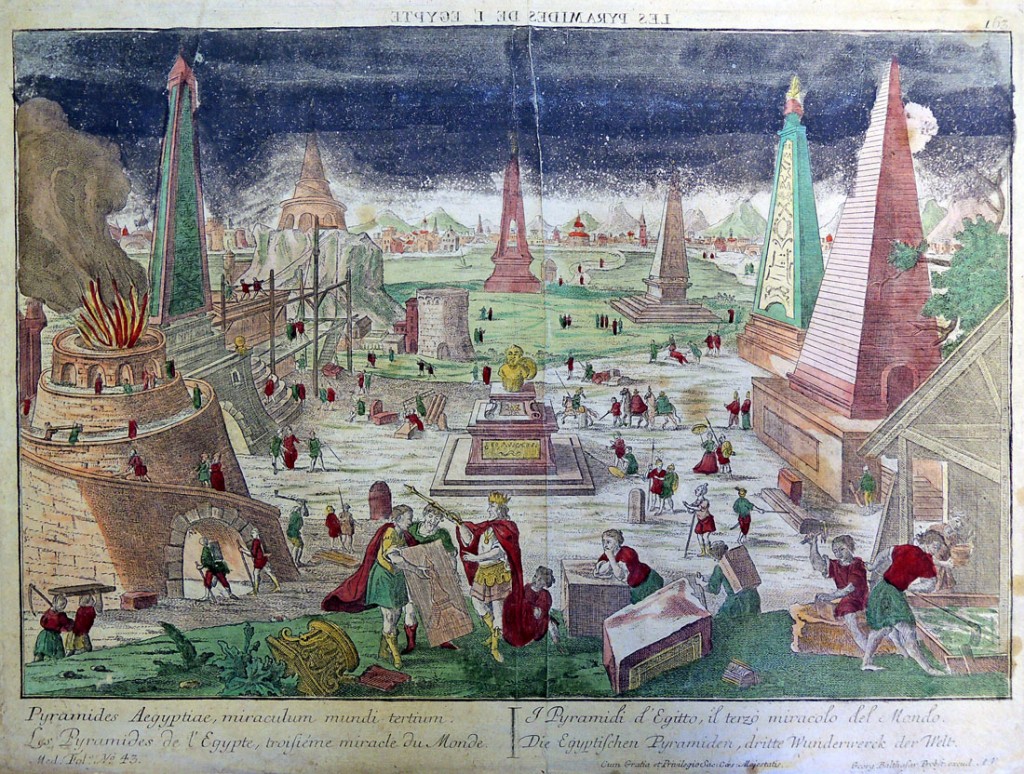 Georg Balthasar Probst. Les Pyramides de l’Egypte. Augsburg, ca. 1750-1800. Original engraving hand-colored at publication.
Georg Balthasar Probst. Les Pyramides de l’Egypte. Augsburg, ca. 1750-1800. Original engraving hand-colored at publication.
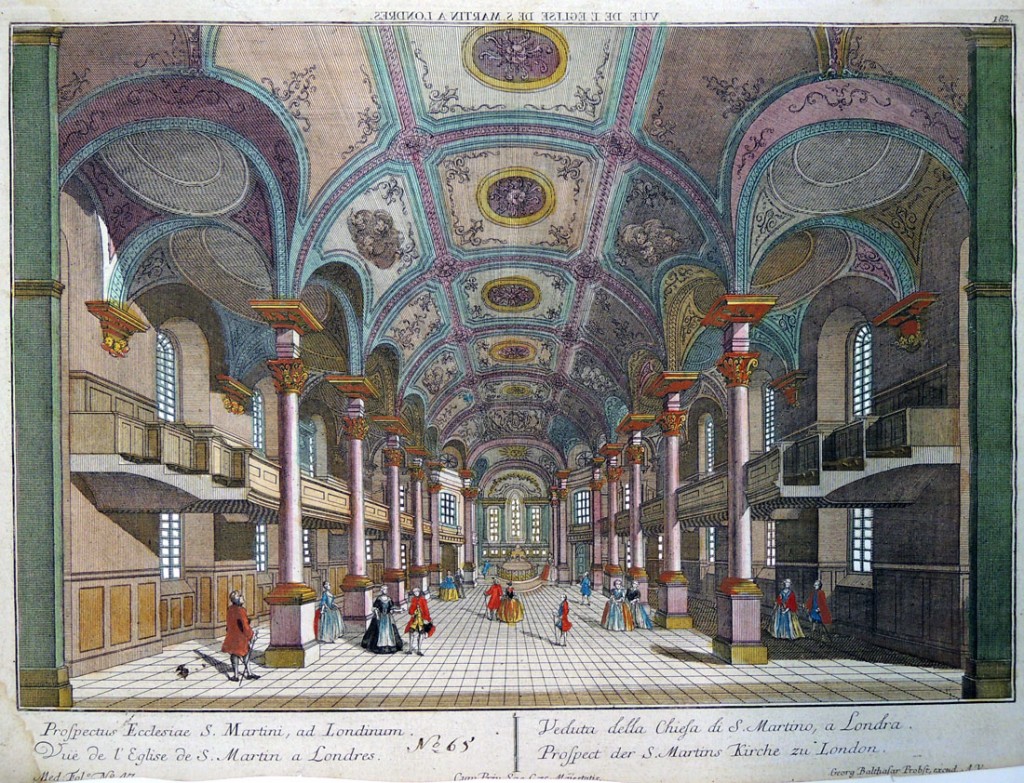 Georg Balthasar Probst. Veduta della Chiesa di S. Martino, a Londra. Augsburg, ca. 1750-1800. Original engraving hand-colored at publication.
Georg Balthasar Probst. Veduta della Chiesa di S. Martino, a Londra. Augsburg, ca. 1750-1800. Original engraving hand-colored at publication.
above: lit from the front
below: lit from the back
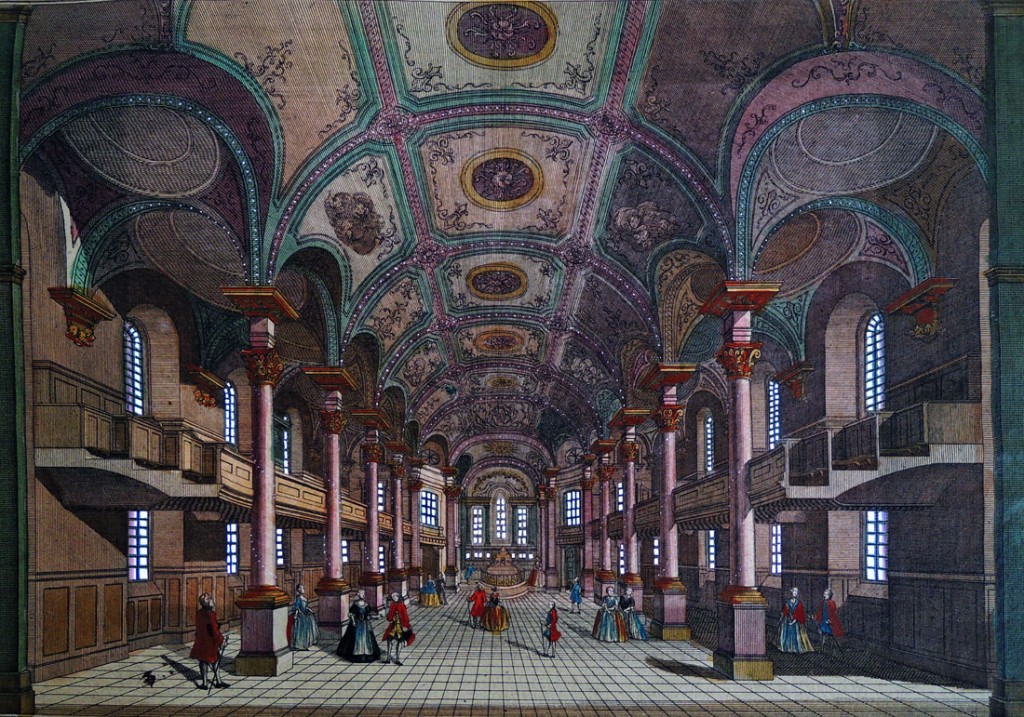 C.J. Kaldenbach, “Perspective Views,” Print Quarterly 2, no.2 (June 1985): 87-104.
C.J. Kaldenbach, “Perspective Views,” Print Quarterly 2, no.2 (June 1985): 87-104.
Erin Blake, “Zograscopes, Virtual Reality and the Mapping of Polite Society in Eighteenth Century England,” in New Media 1740-1915 (Cambridge Mass., 2003)
Erin Blake, “Topographical Prints Through the Zograscope,” Imago Mundi 54 (2002): 120-4.

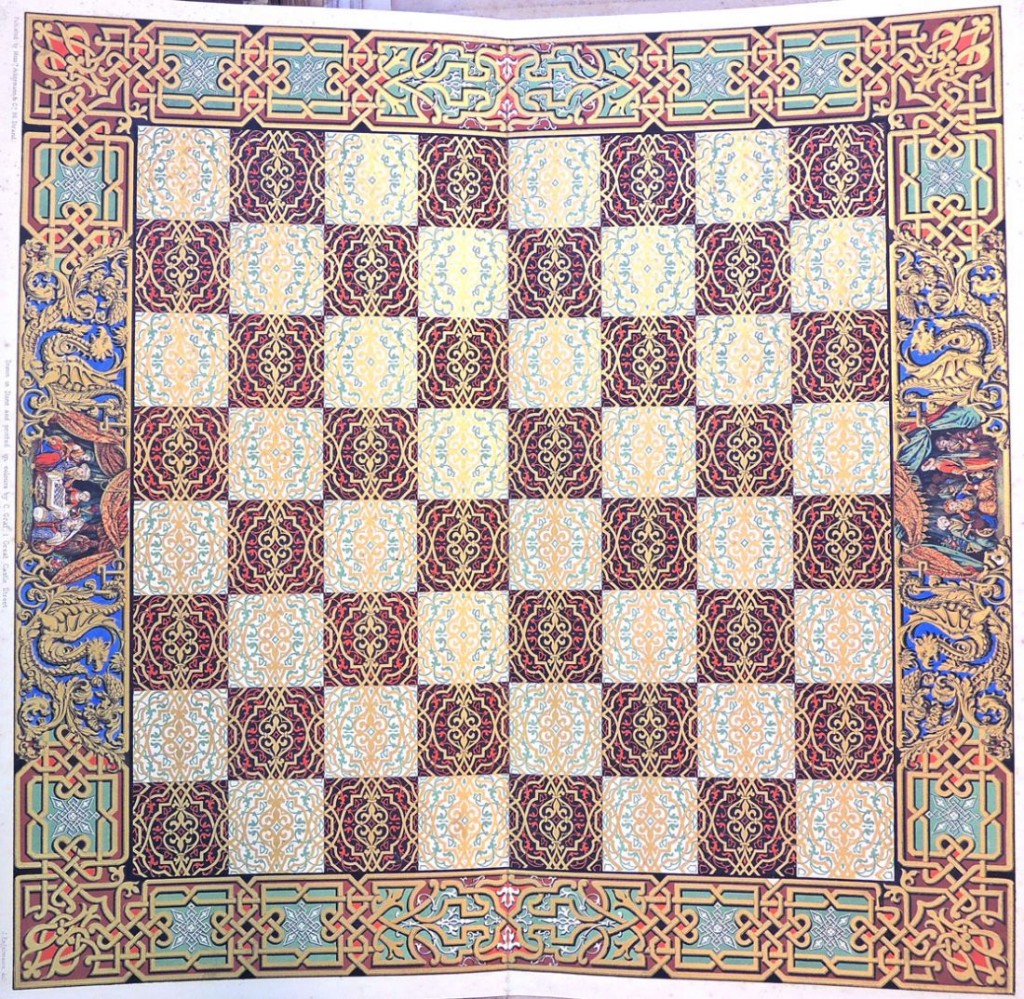
 In 1837, Engelmann took out a patent on chromolithography but died two years later. His son Jean Engelmann continued the family business and in 1842, partnered with members of the Graf family of printers as his father had also done. Below is the building where this game board was printed at One Great Castle Street, London.
In 1837, Engelmann took out a patent on chromolithography but died two years later. His son Jean Engelmann continued the family business and in 1842, partnered with members of the Graf family of printers as his father had also done. Below is the building where this game board was printed at One Great Castle Street, London.
